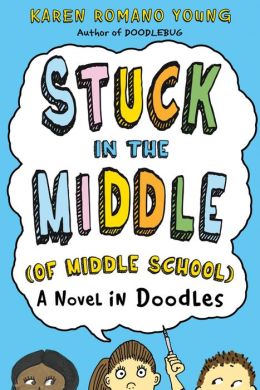Graphic novels for middle and high school are becoming ever
more popular. In general, these novels seem to appeal more to boys than to
girls and have a great deal of violence within them, as well as a high degree
of fantasy. I personally find the graphic novel a little more difficult to read
because I have to make myself pay attention to the words as well as the
pictures and I am grounded in the genre of words only, making it a little more
difficult to attend to the pictures as well.
Here is a sampling of the graphic novels that have been
published in the last year. It is not exhaustive by any means, but just shows a
little of what is out there. I have read some of these, but others I have
simply skimmed to see how the story is told and what the focus of the book is.




Many of these books are similar to Diary of a Wimpy Kid (Jeff Kinney). They are a mix of pictures and stories, so not
exactly a graphic novel in the sense that they do not look like a “comic.” In
this category are the two by Andy Griffiths and Terry Denton, telling the story
of two characters and their adventures. These two have the added feature of
being inanely silly, with liberal splashes of puns throughout (ie, the Thirteen Story Treehouse, a play on
words from the very start.)Stuck in the
Middle of Middle School: A Novel with Doodles
by Karen Young is another example of this, with the added feature of being a
facsimile of a diary, very popular with the middle school set. None of these
three are books that I would go out of my way to purchase or share with young
people. But, keep reading, the good ones
are out there.
Some of the books are told in
comic fashion to appeal to younger readers who may not be up to reading a full
on novel. Legends of Zita the Spacegirl
by Ben Hatke is one of these. Zita began her adventures in the first volume.
She ended up in outer space because of her own bullying behavior toward one of
her friends and now she is stuck and cannot get back to earth. But, at least
she is a hero to her fellow space-nuts. Humans, outer space aliens and robots
are all represented here and as Zita travels through space, she learns lessons
in how to interact and be kind to all of these creatures. Having a young girl
as the hero in this series is genius and it has appeal to both genders, showing
Zita to be strong and brave and someone who is capable of big mistakes as well.
The story told in words and pictures is as strong as Zita and carries the
reader easily between planets.
Just as the diary format works for
the younger set, the format of a memoir works for the high school readers. Lucy
Knisley uses this format extremely well in Relish:
My Life in the Kitchen. She draws on a memory from her childhood or
adolescence and portrays it in traditional comic book fashion. Each memory is
connected to a culinary delight that concludes each section as an illustrated
recipe. Anyone with an interest in food or memoir will be delighted with this
book.
Totally out of my genre preference
are graphic novels telling a story of fantasy, often involving violence and
creatures from another time and place. While Zita could be in this category,
the lack of violence means she is not in this league. Curses, Foiled Again by Jane Yolen and Broxo by Zack Giallongo are both somewhat gory, one futuristic and
one set in the past. Yolen sets the genre on its head by featuring a young
woman who is both smarter and stronger than her male counterparts as the lead.
Neither of these stories held my interest, largely because they are not the
genre I normally choose to read.
And finally, Victory, Resistance book 3 by Carla Jablonski and Leland Pruvis
is historical fiction told through
the genre of graphic novel. Set in France in the waning days of World War II,
the story of a family with members who react differently to the pressure that
the Germans put on many French people. This explores an interesting question:
for those who seemed to be collaborating with the enemy, who can know if they
were acting complicit in order to get information to share or if they were traitors
to their country. In the end, everyone (or almost everyone) claimed their
actions were done in some way to help their countrymen. While historical
fiction is not my favorite genre, it is much preferred to violent fantasy. I
was pulled in by this story and by the overarching question of what is
collaboration and what is resistance, as well as how far can the resistance go
without exposing innocent countrymen to the ultimate risk.
For reviews of more graphic novels, check out this great blog where comics and graphic novels are reviewed: http://goodokbad.com/index.php/about/